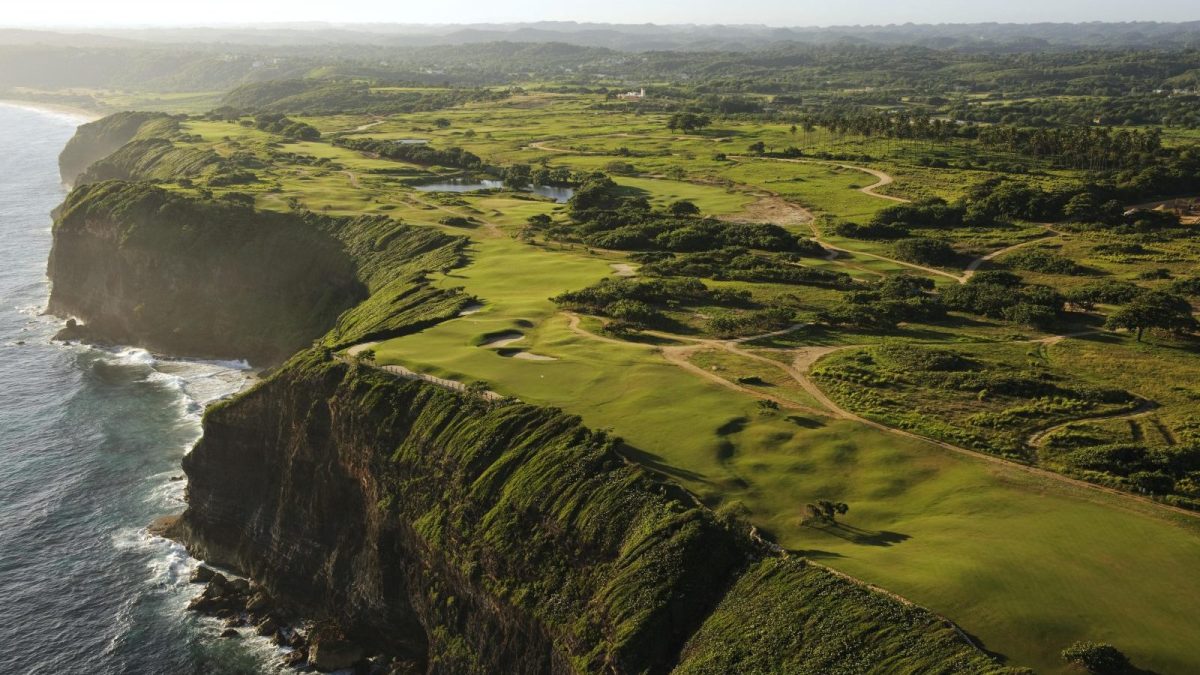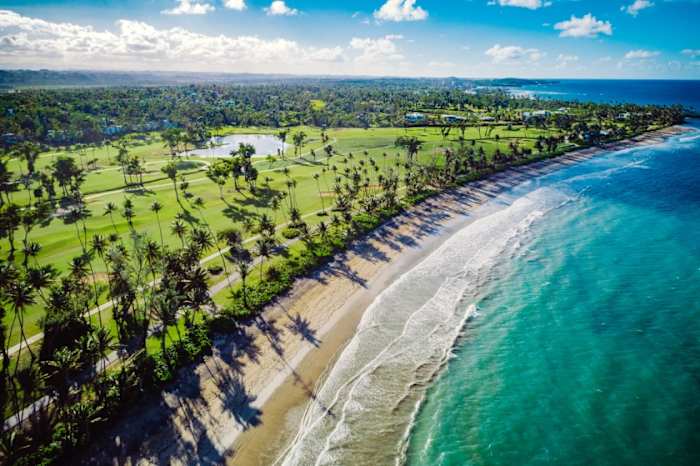
Puerto Rico’s bounce back effect | Where to Golf Next
Two years after Hurricane Maria ravaged Puerto Rico, an island roughly the size of Connecticut, 17 of its 18 golf clubs and resorts have bounced back.
It’s an astounding realization considering the devastation. For 36 hours in late September 2017, the Category 4 storm pounded the 3,500-square mile island, leaving many courses — like much of the island — resembling a disfigured boxer’s face. In another word: unrecognizable.
Only one course, the El Conquistador — a 1992 Arthur Hills design on the eastern side that is a 40-minute drive from San Juan, hasn’t quite gotten to its feet yet. Plans to reopen it are in the works.
Despite the most destructive hurricane to hit the island in 85 years and recent governmental unrest — in which Gov. Ricardo Rossello resigned amid allegations of rampant improprieties — a couple recent silver linings bear positivity for golf.
According to a June report released by Discover Puerto Rico, the Island’s first-ever Destination Marketing Organization (DMO), occupancy spending reached $373.6 million between January and April of this year. They were the highest figures in the past eight years. Better yet, it equated to a 12.4 percent increase when compared to 2017 pre-Hurricane Maria levels. As an aside, the storm caused more than $91 billion in damage.
And in a separate release earlier in the year, the DMO announced that Island golf courses and resorts reported substantial growth in rounds and revenue during the first four months of 2019 compared to that timeframe last year. Generally speaking, January through April represents golf’s high season.
“The future of Puerto Rico has never been brighter, and this comeback story, which we are proud to be a part of, is far from over,” said Brad Dean, CEO of Discover Puerto Rico.

The front nine at The Links at Royal Isabela needed just three months to reopen after Hurricane Maria. Four holes on the inward nine, though, were not as fortunate and had to be rebuilt.
(Discover Puerto Rico)
Known as the Caribbean golf capital, Puerto Rico has always been an enticing boondoggle for a variety of reasons. It’s an unincorporated U.S. territory that relies on U.S. currency; American citizens don’t need a passport to visit; the island is bilingual; and, perhaps most important, year-round warm weather presents an opportunity to tee it up 365 days a year.
What makes Puerto Rico even more tempting as a golf destination lies in the fact that there’s a little something for everyone. Moreover, no car trip is longer than two hours from the eastern to western seaboards; or a drive that exceeds 75 minutes from north to south.
“There are three courses that fit the description of luxury,” said Dan Shepherd, principal, Dan Shepherd Public Relations. “After that, there is a nice upscale tier of about seven courses and the rest are somewhere between budget and community/muni and a little above that.”
Courses have been designed by a who’s who architectural list that includes Tom and George Fazio, Rees Jones, Robert Trent Jones (junior and senior), Tom Kite, Greg Norman, Gary Player and local hero Chi Chi Rodriguez, to name several.
The island presents disparate terrain and micro climates. Most of the courses surround the relatively flat San Juan capital, while those located more inland and on the western side were built among foothills, mountains, rugged contours or on bluffs that peek out over the Atlantic Ocean and Caribbean Sea confluence.
Punta Borinquen Golf Club, built atop a cliff side promontory in 1940 on the now-defunct Ramey U.S. Air Force Base, offers perhaps the most stunning vistas on its par-72 layout. When the military base closed in 1973, Punta Borinquen became the island’s first public layout.
Positioned on Puerto Rico’s northwest coastline along cliffs 200 feet above the ocean, Royal Isabela’s Links Course reopened its front nine after about three months. However, four holes on the back nine needed to be rebuilt due to hurricane damage.
“For people who like a little more authenticity, diversity and a cultural feel, these farther-out courses have appeal,” said Shepherd.
When the hurricane hit, the Palmas Athletic Club at Palmas Del Mar, in southeast Humacao, was the first in its path. Both of its two 18-hole courses, The Palm (Player) and The Flamboyen (Rees Jones), suffered damage.
TPC Dorado Beach, near San Juan, saw its three top-flight championship courses endure moderate damage. A decision was made to close its Pineapple course afterward, but that had already been in the works pre-Maria.
Its East Course, host of the 2015 PGA Tour Latinoamerica Tour Championship and also named the No. 1 course on the island by Golf Digest in 2016, needed an extensive clean up. With the hurricane’s eye just five miles away, the courses experienced the storm’s full brunt with wind gusts of up to 200 mph, according to Jeff Willenberg, Director of Golf at TPC Dorado Beach.
Tree damage and debris littered the East Course. On the Sugarcane design, the first nine holes sat underwater for close to five days.
“We have completely rebounded, surpassing golf rounds and memberships for this year,” said Willenberg. “Just the golf rounds alone, we have seen amazing turnaround in resort rounds since the storm. We’ve been
extremely pleased.”

TPC Dorado Beach endured wind gusts of up to 200 mile per hour, and needed just an extensive clean up to reopen.
(Discover Puerto Rico)
Said Shepherd: “As often happens in weather disasters, courses tend to come back quicker because it’s just turf, trees and sand bunkers. A lot of the resort courses are in good shape because of insurance money. One of the great ironies of natural disasters with resorts is that they invested back into their facilities.”
There’s no better example of that than the Wyndham Grand Rio Mar Puerto Rico Golf & Beach Resort, which features 36 holes. The resort underwent a multi-million dollar renovation that included a new clubhouse and more efficient-friendly restaurants and bars.
Even the island’s largest sporting event wasn’t spared. The Puerto Rico Open, an annual PGA Tour stop since 2008, returned this past February after taking 2018 off to clean up. Held at Coco Beach Golf Club, the Kite design was under water, bunker sand had washed away and about half the palm trees were strewn like fallen bowling pins.
In an anomalous way, the hurricane may have upped the ante among clubs and resorts. Insurance monies created an opportunity to rebuild and renovate. The point wasn’t lost on Willenberg, who left Dallas for Puerto Rico in 1997.
“Up until Maria, all the different properties have done a much better job of elevating the level of golf course conditions,” he said. “When I first came on the island, most of the courses were not in good shape. They just weren’t. But from what I’ve seen over my 20 years — especially the last eight to 10 years — there has been dramatic improvement in golf course conditions. I think the quality of golf has improved dramatically.”